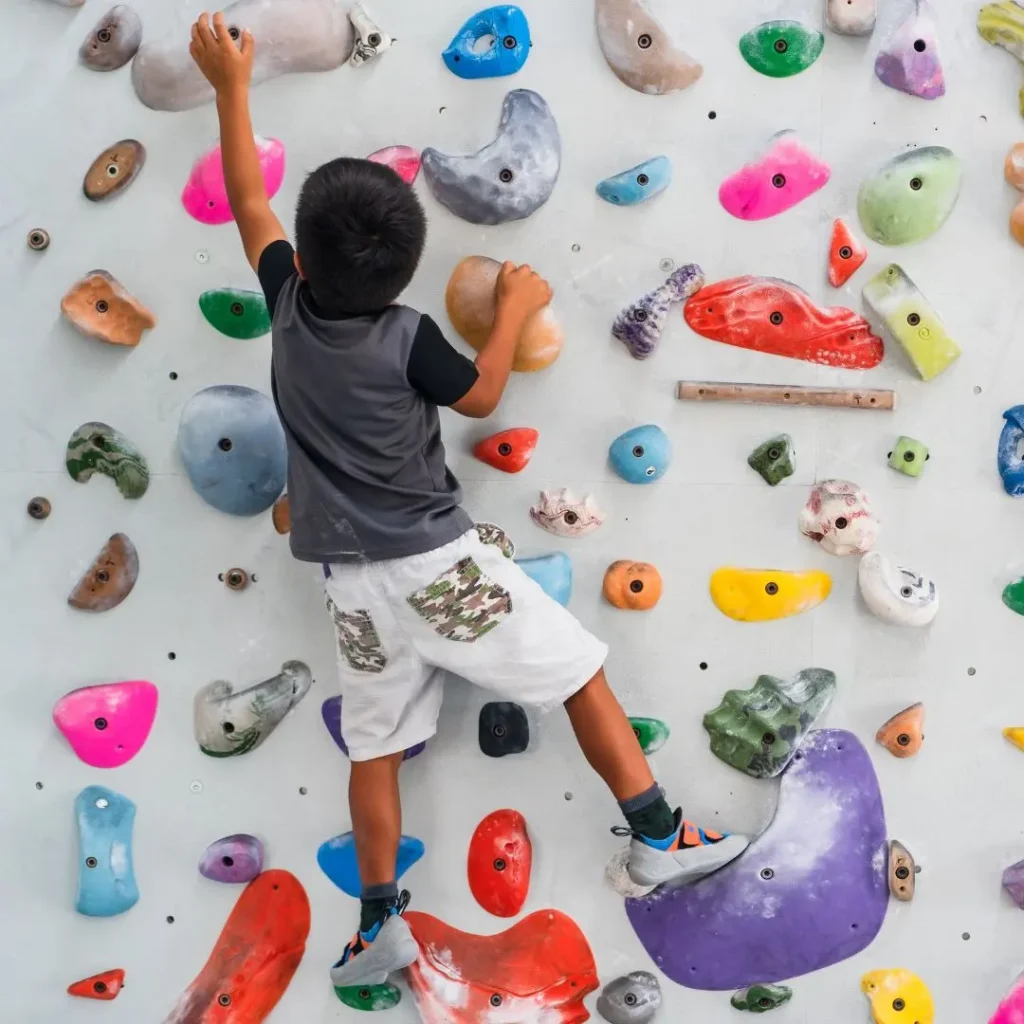Disclaimer: This post contains affiliate links. If you use these links to buy something, we may earn a commission at no extra cost to you.

Climbing is a natural instinct for children. It provides an outlet for energy, challenges their physical capabilities, and helps them develop crucial skills like coordination, balance, and problem-solving.
As a parent or caregiver, you can foster this love of climbing with age-appropriate climbing toys that offer safe and stimulating experiences.
Plus, you’ll find expert videos and resources for even more insight into the power of Play & Toys!
Join Our Community!
Climbing Toys by Age: A Quick Guide
| Age Group | Key Benefits & Examples |
|---|---|
| Babies (0-12 months) | Develops motor skills, sensory stimulation, hand-eye coordination. Examples include; Play mats with activity gyms, play arches, sit-up seats, textured tunnels, baby balance bikes |
| Toddlers (1-3 years) | Enhances gross motor skills, builds strength, encourages imaginative play. Examples include; Indoor climbing structures, foam climbing blocks, climbing ladders, playhouses with climbing features, ride-on cars with climbing elements |
| Preschoolers (3-5 years) | Improves balance, coordination, problem-solving, fosters confidence. Examples include; Pikler triangles, climbing gyms, ninja warrior courses, slacklines, boulder walls (with supervision) |
| Grade Schoolers (6-12 years) | Builds strength, agility, challenges physical limits, promotes calculated risk-taking. Examples include; Rock climbing gyms, high ropes courses, climbing trees (with supervision), portable rock walls, monkey bars, trampolines (with enclosures), balance beams |
Popular & Trending Climbing Toys on amazon.com
- ZICOTO Fun Climbing Toys and Foam Play Area for Toddlers on amazon.com
- Little Tikes First Slip And Slide on amazon.com
- Pikler Triangle Set Montessori Climbing Toys for Toddlers
- Indoor Jungle Gym, Montessori Climbing Toys on amazon.com
- Hyponix Ninja Tree Climbing Kit – 16 Rock Climbing Holds
- ECR4Kids SoftZone Tiny Twisting Climber, Beginner Playset
Baby Climbing Toys (0 – 12 Months)
Even before they can walk, babies benefit from play that encourages movement and exploration. Climbing toys for this age group focus on supporting their developing motor skills and sensory stimulation:
- Soft Play Mats with Activity Gyms: These cushioned surfaces provide a safe space for rolling, reaching, and exploring textures. Overhead activity gyms stimulate visual development and encourage babies to grasp and bat at hanging toys.
- Play Arches with Dangling Toys: Play arches focus on overhead stimulation. Babies can try to grab the dangling toys, working on hand-eye coordination and visual tracking.
- Sit-Up Seats with Activity Trays: Once babies begin sitting independently, sit-up seats support their balance while providing engaging activity trays within reach.
- Textured Climbing Tunnels: Soft, colorful tunnels are perfect for encouraging crawling, exploration, and sensory stimulation.
- Baby Balance Bikes: Low-to-the-ground bikes without pedals give babies a sense of independence and help them practice balance and coordination while scooting around.
Toddler Climbing Toys (1 – 3 Years)
As toddlers become more mobile, they crave bigger challenges. Climbing toys for this age group support gross motor development and imaginative play:
- Indoor Climbing Structures: These offer safe, dedicated spaces for climbing with features like slides, ramps, and climbing walls.
- Foam Climbing Blocks: Soft, stackable shapes allow toddlers to create their own climbing structures while developing spatial awareness and gross motor skills.
- Climbing Ladders with Safety Rails: Designed specifically for toddlers, these provide a way to practice climbing with safe supports.
- Playhouses with Climbing Walls: These structures combine imaginative play spaces with climbing elements.
- Ride-On Cars with Climbing Features: Some ride-on toys may include small climbing walls or ladders for added play options.
Preschool Climbing Toys (3 – 5 Years)
Preschoolers are ready for greater challenges and more complex play experiences. Climbing toys for this age group often focus on obstacle courses, problem-solving, and building strength:
- Pikler Triangles: These versatile wooden structures allow children to climb, slide, and create their own unique play spaces.
- Climbing Gyms with Challenging Features: Tunnels, slides, ramps, and other obstacles create engaging play environments.
- Ninja Warrior Courses: These fun obstacle courses challenge balance, coordination, and strength while providing a sense of accomplishment.
- Slacklines: Low-to-the-ground slacklines are ideal for improving balance and focus.
- Boulder Walls (with supervision): Boulder walls provide a safe introduction to the basics of rock climbing.
Grade Schooler Climbing Toys (6 – 12 Years)
Grade schoolers are ready for larger-scale climbing experiences and challenges that push their limits:
- Rock Climbing Gyms: Climbing gyms offer routes for varying skill levels, allowing children to progress their climbing abilities in a controlled environment.
- High Ropes Courses: These thrilling courses, with safety harnesses and gear, build confidence and encourage calculated risk-taking.
- Climbing Trees (with supervision): Climbing trees provides a natural, accessible way for kids to explore their climbing instincts with proper safety guidance.
- Slacklines (increased height/challenge): Grade schoolers can progress to more difficult slackline setups with greater height and complexity.
- Portable Rock Walls: These offer convenient backyard climbing practice and opportunities for independent skill-building.
- Monkey Bars: A classic element, monkey bars remain a fun way to practice strength and coordination.
Always supervise children while using climbing toys, provide age-appropriate challenges, and ensure play areas are cushioned and free from hazards.
Note: This article is intended for informational purposes. Always consider your individual child’s interests and developmental needs when selecting toys.
Let’s help parents choose the best toys! Share this if you agree.
Resources
- National Institute for Play – How We Play
- Toy Industries of Europe – What makes a toy safe?
- Pathways Org – The Best Toys for Outdoor Play
- Unicef Parenting – The science of play
- National Institute for Play – Relationship between Risky Outdoor Play and Health in Children
